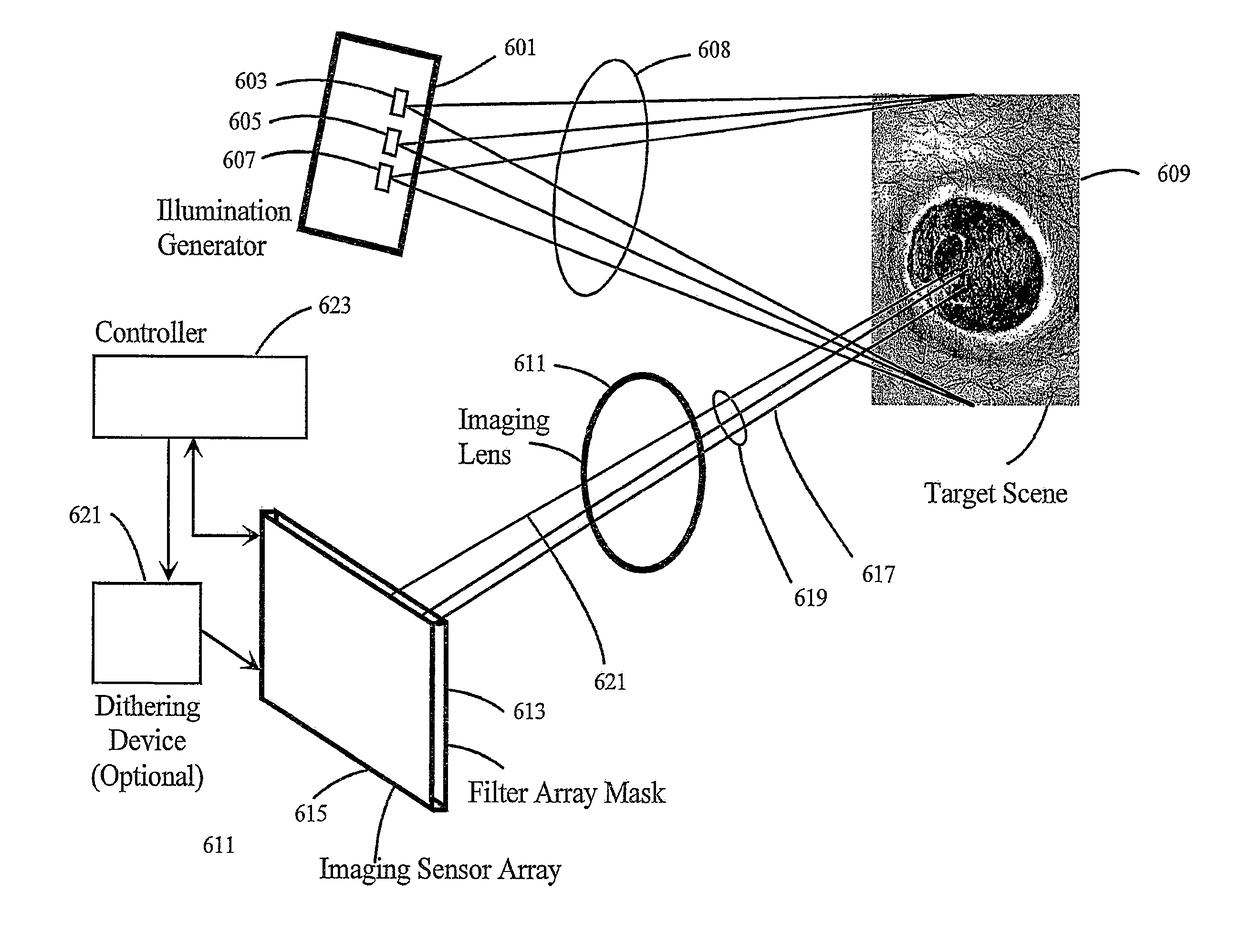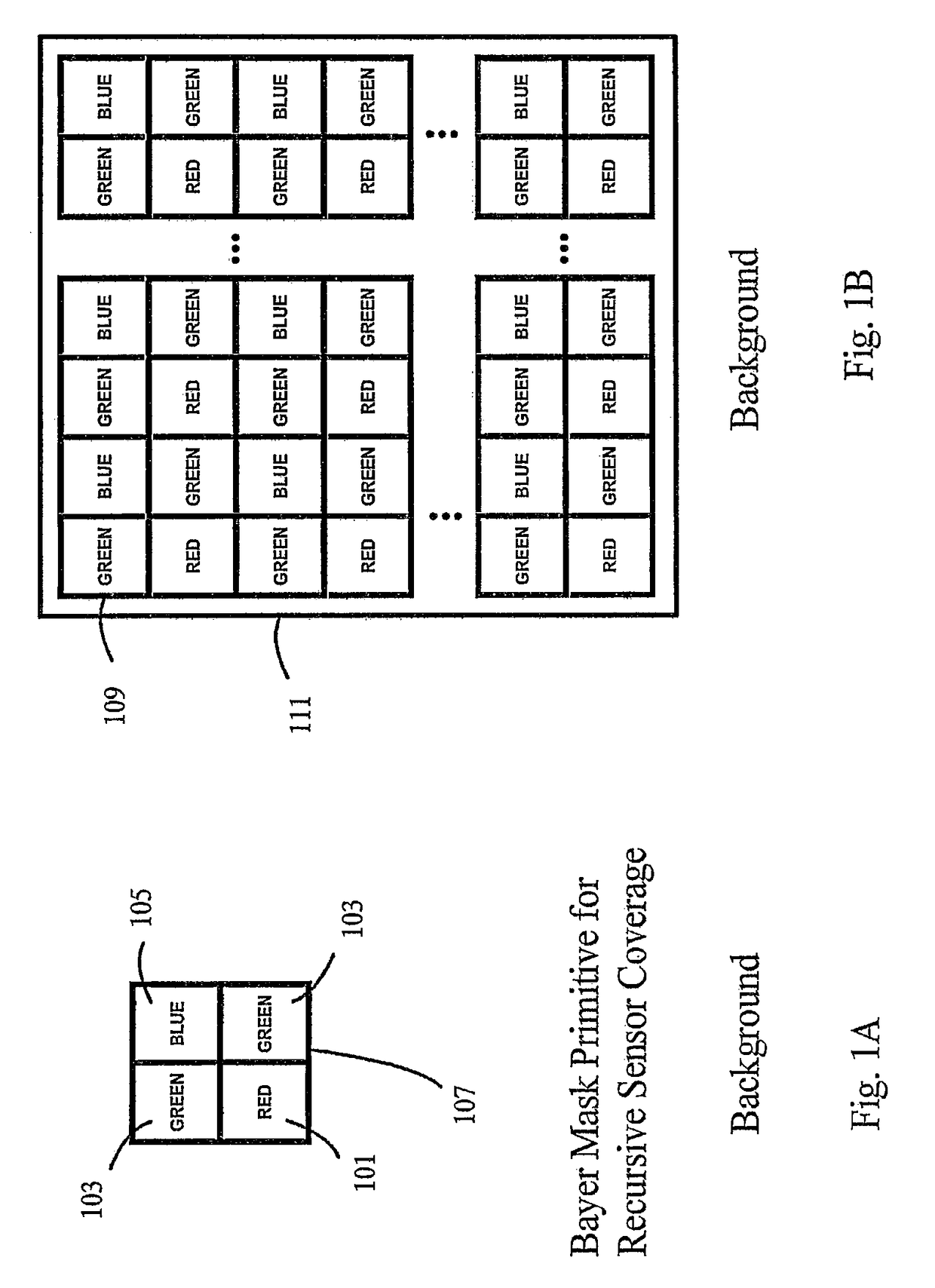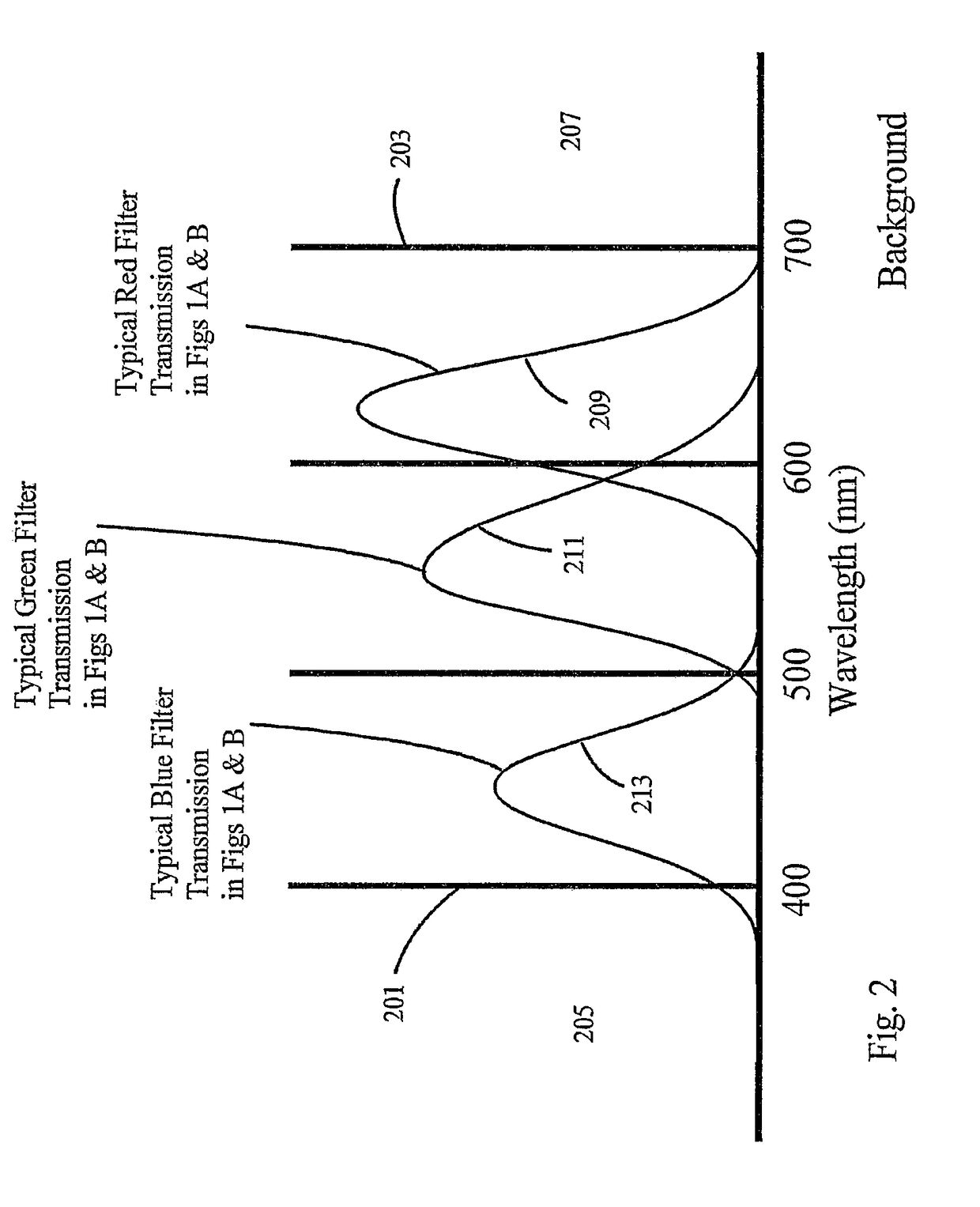Spatial resolution enhancement in hyperspectral imaging
a hyperspectral imaging and spatial resolution technology, applied in image enhancement, optical radiation measurement, instruments, etc., can solve the problem of spatial resolution cost, achieve enhanced spatial and spectral resolution, improve signal-to-noise ratio, and enhance information
- Summary
- Abstract
- Description
- Claims
- Application Information
AI Technical Summary
Benefits of technology
Problems solved by technology
Method used
Image
Examples
Embodiment Construction
[0050]In the above summary, and the following detailed description, reference is made to FIGS. 1-6. This application incorporates by reference the disclosure of international application no. PCT / US13 / 23813, titled “Hyperspectral Imaging Systems, Units, And Methods”, filed on Jan. 30, 2013.
[0051]In one preferred and non-limiting embodiment, the system comprises a hyperspectral sensor array where each elementary pixel sensor is preceded by its own narrow-band filter, upon which is imaged an area of interest on or in a body in question by an optical system with adequate capabilities over the required spectrum, and a number of sequentially available illuminators, which may include broad-band sources of different spectral distributions and / or narrow-band illuminants such as lasers or light emitting diodes. FIG. 3 shows five possible illuminant spectral distributions I(λ), where each may be varied, for example the narrow band source may be anywhere within, or for some types of fluorescenc...
PUM
 Login to View More
Login to View More Abstract
Description
Claims
Application Information
 Login to View More
Login to View More - R&D
- Intellectual Property
- Life Sciences
- Materials
- Tech Scout
- Unparalleled Data Quality
- Higher Quality Content
- 60% Fewer Hallucinations
Browse by: Latest US Patents, China's latest patents, Technical Efficacy Thesaurus, Application Domain, Technology Topic, Popular Technical Reports.
© 2025 PatSnap. All rights reserved.Legal|Privacy policy|Modern Slavery Act Transparency Statement|Sitemap|About US| Contact US: help@patsnap.com



